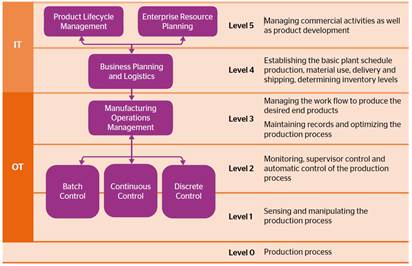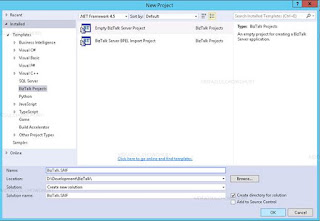DoDAF 2.0 - A Popular EA Framework
DoDAF 2.0 was released in May, 2009 and was prescribed framework for US Department of Defense. It works as the comprehensive framework and conceptual model enabling the Architecture Department facilitating the ability to DoD managers at all levels to make key decisions more efficiently and effectively. It was hoped to provide organized information sharing across departments, Joint Capabilities Areas or JCAs, Mission, Component, and Program boundaries. DoD Managers are the process owners, specify the requirements and control the development of architectures within respective areas.
DoDAF emphasizes on architectural data rather than developing individual products. The visualization of architectural data is being accomplished by models which can be documents, spreadsheets, dashboards etc. When data is being collected and presented, the presentation is being called Views and organized collections of these views are referred to as ViewPoints in DoDAF 2.0.
DoDAF Architecture Development Method originally introduced from DoDAF V1.5 and being expanded to highlight its use in a data-driven, net-centric architecture development environment.
DoDAF ADM is a 6-step process:
Step 1: Determine Intended Use of Architecture
Step 2: Determine Scope of Architecture
Step 3: Determine Data Required to Support Architecture Development
Step 4: Collect, Organize, Correlate, and Store Architectural Data
Step 5: Conduct Analyses in Support of Architecture Objectives
Step 6: Document Results in Accordance with Decision-Maker Needs
S- DoDAF describes Models into the following ViewPoints:
v All Viewpoint: All Viewpoints provide an overview of the architectural effort including scope, context, rules, constraints, assumptions, and the derived vocabulary that pertains to the Architectural Description.
v Capability Viewpoint: Describes Capability Models describe capability taxonomy and capability evolution.
v Data and Information Viewpoint: this viewpoint provides the conceptual, logical and physical data models.
v Operational Viewpoint: Operational Viewpoints describe the tasks and activities, operational elements, and resource flow exchanges required to conduct operations. A pure operational model is materiel independent
v Project Viewpoint: Project Viewpoints describe how programs, projects, portfolios, or initiatives deliver capabilities, the organizations contributing to them, and dependencies between them.
v Services Viewpoint: Services Viewpoint describes services and their interconnections.
v Standards Viewpoint: It defines set of rules governing the arrangement, interaction, and interdependence of parts or elements of the Architectural Description
v Systems Viewpoint: It describes systems and interconnections providing for, or supporting, Enterprise functions
DoDAF 2.0 Supported Architecture:
DoDAF supports all four Architecture Domains (Business Architecture, Data Architecture, Application Architecture, and Technology Architecture) through different ViewPoints. If we look at the comparative table [Figure: DoDAF and TOGAF model mapping ] for DoDAF and TOGAF, we can see that DoDAF viewpoints are mapped with TOGAF ADM Phases.
v Department-level [which includes Department, Capability & Component architectures] Architecture
v Solution Architecture
DoDAF 2.0 ADM:
DoDAF ADM is basically a six step process. The 6-step architecture development process is a generic, time-tested method, which can be utilized, in a wide range of architectural requirements through relatively simple adaptation.
v Step 1: Determine Intended Use of Architecture
v Step 2: Determine Scope of Architecture
v Step 3: Determine Data Required to Support Architecture Development
v Step 4: Collect, Organize, Correlate, and Store Architectural Data
v Step 5: Conduct Analyses in Support of Architecture Objectives
v Step 6: Document Results in Accordance with Decision-Maker Needs
DoDAF 2.0 Deliverables:
DoDAF deliverables are basically ViewPoints. Each viewpoint has a particular purpose, and usually presents one or combinations of the following:
- High Level operational concept of the whole enterprise
- System Interface Definitions
- Information on business or operational activities and how they are being supported by a system, or how program management brings together the different aspects of network enabled capability.
All ViewPoints
v AV-1 Overview and Summary Information
v AV-2 Integrated Dictionary
Capability Viewpoint (CV)
v CV-1: Vision
v CV-2: Capability Taxonomy
v CV-3: Capability Phasing
v CV-4: Capability Dependencies
v CV-5: Capability to Organizational Development Mapping
v CV-6: Capability to Operational Activities Mapping
v CV-7: Capability to Services Mapping
Data and Information Viewpoint (DIV)
v DIV-1: Conceptual Data Model
v DIV-2: Logical Data Model
v DIV-3: Physical Data Model
Operational Viewpoint (OV)
v OV-1: High-Level Operational Concept Graphic
v OV-2: Operational Resource Flow Description
v OV-3: Operational Resource Flow Matrix
v OV-4: Organizational Relationships Chart
v OV-5a: Operational Activity Decomposition Tree
v OV-5b: Operational Activity Model
v OV-6a, 6b, 6c: Introduction
v OV-6a: Operational Rules Model
v OV-6b: State Transition Description
v OV-6c: Event-Trace Description
Project Viewpoint (PV)
v PV-1: Project Portfolio Relationships
v PV-2: Project Timelines
v PV-3: Project to Capability Mapping
Services Viewpoint (SvcV)
v SvcV-1 Services Context Description
v SvcV-2 Services Resource Flow Description
v SvcV-3a Systems-Services Matrix
v SvcV-3b Services-Services Matrix
v SvcV-4 Services Functionality Description
v SvcV-5 Operational Activity to Services Traceability Matrix
v SvcV-6 Services Resource Flow Matrix
v SvcV-7 Services Measures Matrix
v SvcV-8 Services Evolution Description
v SvcV-9 Services Technology & Skills Forecast
v SvcV-10abc Introduction to SvcV-10a, SvcV-10b and SvcV-10c
v SvcV-10a Services Rules Model
v SvcV-10b Services State Transition Description
v SvcV-10c Services Event-Trace Description
Systems Viewpoint (SV)
v SV-1 Systems Interface Description
v SV-2 Systems Resource Flow Description
v SV-3 Systems-Systems Matrix
v SV-4 Systems Functionality Description
v SV-5a Operational Activity to Systems Function Traceability Matrix
v SV-5b Operational Activity to Systems Traceability Matrix
v SV-6 Systems Resource Flow Matrix
v SV-7 Systems Measures Matrix
v SV-8 Systems Evolution Description
v SV-9 Systems Technology & Skills Forecast
v SV-10a Systems Rules Model
v SV-10b Systems State Transition Description
v SV-10c Systems Event-Trace Description
DoDAF Artifacts:
v AV-1 : Overview and Summary Information
v AV-2 : Integrated Dictionary
v OV-1 : High Level Operational Concept Graphic
v OV-5 : Operational Activity Model
v OV-2 : Operational Node Connectivity Description
v OV-3 : Operational Informational Exchange Matrix
v SV-1 : System Interface Description
v TV-1 : Technical Standards Profile



Comments
Post a Comment